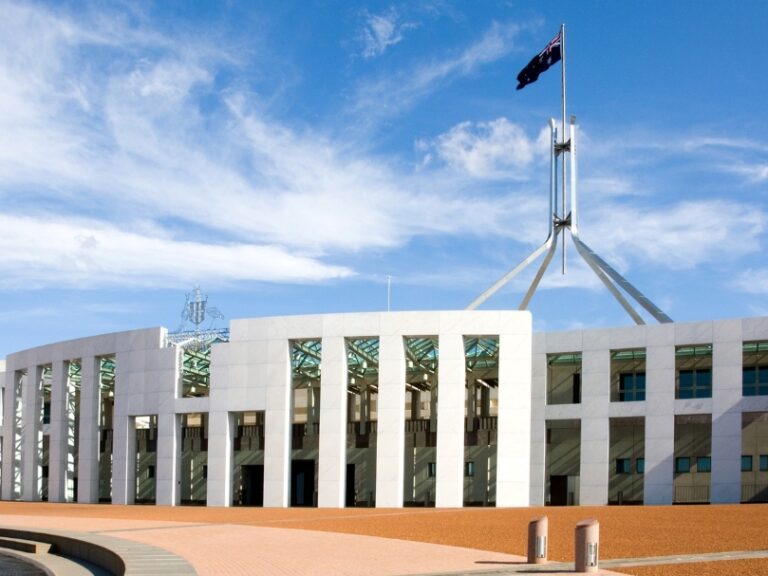
Acclimatising to Change: Australia’s Upcoming Climate Reporting Standards
The finalisation of Australian climate reporting standards will be an important catalyst for organisations to understand and manage their climate-related risks and opportunities.
For financial institutions, actuaries will play a pivotal role in navigating climate-related data challenges, devising methodologies and supporting strategic decision-making.
Why are there new reporting standards?
The 2015 Paris Agreement set a long-term goal to limit the rise in global surface temperature to 1.5°C, or at least well below 2°C. Meeting this target will require immediate reductions in greenhouse gas (GHG) emissions and net-zero global emissions by the middle of the 21st century.
In June 2022, the Australian Government strengthened its commitment to the Paris Agreement, with a target to reduce GHG emissions to 43% below 2005 levels by 2030 and reach net-zero emissions by 2050.[1]
These commitments are reflected in the Net-Zero Plan[2], which outlines decarbonisation pathways for public and private entities across major sectors.
To provide transparency in how private sector organisations are progressing in their decarbonisation and managing their climate-related risks, the Government has also committed to improving the quality of climate-related financial disclosures.
Standardising climate disclosures across organisations is intended to provide users with more consistent, comparable, reliable and clear information for their decision-making purposes.
What are the new reporting standards?
On 27 March 2024, legislation was introduced to the federal parliament to amend the Corporations Act 2001 and mandate climate reporting for certain Australian entities (The Treasury Laws Amendment (Financial Market Infrastructure and Other Measures) Bill 2024)[3]. This Bill passed the House of Representatives on 6 June 2024 and is currently before the Senate.
The Bill provides authority to the Australian Accounting Standards Board (AASB) to create sustainability disclosure standards, which are aligned with international standards such as the International Financial Reporting Standards (IFRS) S1 and S2. These IFRS standards were built upon existing frameworks such as the Taskforce on Climate-Related Financial Disclosures (TCFD).
On 23 October 2023, AASB released an Exposure Draft of the Australian Sustainability Reporting Standards (ASRS ED SR1) for industry consultation, which included:
- ASRS 1 (General Requirements for Disclosure of Climate-related Financial Information): Developed using IFRS S1 as the baseline and provides an overarching framework for climate-related disclosure.
- ASRS 2 (Climate-related Financial Disclosures): Developed using IFRS S2 as the baseline and contains specific requirements for climate-related reporting such as emissions measurement and climate-related scenario analysis.
- ASRS 101 (References in Australian Sustainability Reporting Standards): Lists documents that are referenced in the ASRS.
At the time of this article’s publication, the contents of these Standards are in draft and are expected to be finalised in August 2024.
Like the TCFD and IFRS S1 and S2, the draft ASRS has four pillars centred on climate-related risks and opportunities:
- Governance: Disclose governance processes, controls and procedures used to monitor and manage climate-related risks and opportunities.
- Metrics and targets: Disclose metrics and targets to enable users to understand an entity’s performance in relation to its climate-related risks and opportunities. These include mandated metrics (e.g., GHG emissions, amount of business exposed to climate risks) and those set by the entity to monitor performance of climate-related strategy.
- Strategy: Disclose information to enable users to understand an entity’s strategy for managing climate-related risks and opportunities over the short, medium and long term.
- Risk management: Disclose information about the processes the entity uses to identify, assess, manage and prioritise climate-related risks and opportunities.
Who do the standards apply to?
The standards will apply to:
- Large entities and their controlled entities that meet specific size thresholds (see below table) and are currently required to report under Chapter 2M of the Corporations Act 2001,
- Entities that are required to report under the National Greenhouse and Energy Reporting Act 2007 (NGER Act); and
- Asset owners (including superannuation entities) with funds under management above $5 billion.
When do the standards come into force?
The standards will be phased in based on the size and type of the entity. The following is a proposed timeline in the most recent draft, although these are subject to change. If the legislation does not pass by 2 December 2024, the Group 1 start date will be delayed to at least 1 July 2025.
|
Group |
Reporting periods beginning |
1. Large entities meeting at least two of the following criteria: |
2. NGER Act Reporters |
3. Asset Owners |
||
|
Employees |
Consolidated gross assets |
Consolidated revenue |
||||
|
1 |
1-Jan-25 |
More than 500 |
$1 billion or more |
$500 million or more |
Above NGER publication threshold |
N/A |
|
2 |
1-Jul-26 |
More than 250 |
$500 million or more |
$200 million or more |
All other NGER reporters |
$5 billion assets under management or more |
|
3 |
1-Jul-27 |
More than 100 |
$25 million or more |
$50 million or more |
N/A |
N/A |
Reporting for Scope 3 emissions (i.e., indirect emissions excluding the generation of purchased energy) will be delayed a further year from reporting commencement.
In addition, assurance requirements are currently being developed by the Auditing and Assurance Standards Board (AUASB). The following table represents two possible timelines of assurance requirements being considered by the AUASB, including the phasing of limited and reasonable assurance for each disclosure topic area within the draft ASRS ED SR1.
Figure 1: AUASB options for a possible assurance phasing model
What are common challenges that organisations will face?
- Capability building: Organisations will need to develop capabilities in the identification, measurement and management of climate risks and opportunities. This effort will not only involve the finance and sustainability reporting teams but will also extend to the board and the wider firm. Organisations will require ongoing training and research to stay informed about the evolving regulatory landscape, developments in climate science, emerging technologies, and shifting consumer preferences.
- Governance: Organisations will need to setup new systems, processes and controls to manage these climate risks and opportunities. This will include embedding climate considerations into financial planning processes, key performance indicators and decision-making frameworks to ensure comprehensive integration across all levels of the organisation.
- Data collection: Organisations will need to collect activity and climate data from across their entire value chain. For scope 3 emissions, this will include engaging suppliers, customers and business partners, which may become a costly task. In addition, organisations will need to obtain reliable climate data, such as emissions factors, that is at the suitable granularity for their operational data and relevance to their geography. This will also include technical challenges of setting up infrastructure that can handle large amounts of sparse data.
- Methodologies: Organisations will need to design and implement methodologies for emissions measurement, scenario analysis and risk assessments that are proportional to their data availability, quality and granularity, and aligned with industry practices. Various assumptions will be needed to handle missing data points, which will likely require industry-benchmarked proxies.
- Disclosures: Organisations will need to ensure their strategic actions, targets and results are communicated in a manner that does not create risk of greenwashing. When disclosing metrics, organisations will need to ensure they provide a sufficient transparency on their data inputs, approach and limitations.
How can actuaries help?
As data specialists with commercial acumen, actuaries will be able to play a key role in measuring, managing and disclosing climate risks. For financial institutions, some examples of areas where actuaries can contribute include:
- Scenario analysis: Forward-looking analysis will be required to model asset values, income streams, liabilities and capital adequacy under various climate scenarios and stress tests. Actuaries can assist by leveraging their specialised knowledge of performing long-term projections with incomplete data and uncertain parameters.
- Physical risk measurement: General insurance actuaries often have experience working with historical data and catastrophe models to estimate the physical risk of insured properties. Similar skills will be required to measure the number of business assets and activities exposed to physical climate risks, which is a potential metric in the upcoming Standards.
- Scope 3 GHG emissions measurement: For most financial institutions, the largest source of emissions is generally Scope 3 insured and financed emissions, which have been found to be over 700 times larger than their direct emissions on average.[4] Actuaries may be required to estimate these financed emissions as it requires a strong understanding of the underlying data for investments and insurance policies, as well as ensuring suitable assumptions and methodologies are applied, such as those specified by the Partnership for Carbon Accounting Financials (PCAF).
- Product design: As institutions develop their climate strategy, they may alter their product offerings to meet climate goals. This may include providing insurance discounts for electric vehicles, lower mortgage interest rates for homes with solar panels, or increased borrowing capacity to businesses that provide their climate reporting. Actuaries may be consulted to advise on how these initiatives will affect the pricing, profitability or capital requirements of a portfolio.
It is important to note that actuaries are not necessarily subject matter experts on climate-related science and will need to collaborate and consult with experts in environmental sciences, economics, engineering, and government policy to support their analysis and recommendations. Nonetheless, it will become imperative for actuaries to develop a foundational understanding of climate risk and its implications for organisations.
References
[1] UNFCCC. (2022, June). Australia’s NDC June 2022 update. https://unfccc.int/sites/default/files/NDC/2022-06/Australias%20NDC%20June%202022%20Update%20%283%29.pdf
[2] Department of Climate Change, Energy, the Environment and Water. (n.d.). Net zero emissions. https://www.dcceew.gov.au/climate-change/emissions-reduction/net-zero
[3] Parliament of Australia. (2023). Climate Change Bill 2022. https://www.aph.gov.au/Parliamentary_Business/Bills_Legislation/Bills_Search_Results/Result?bId=r7176
[4] CDP. (2023, July 18). Finance sector’s funded emissions over 700 times greater than its own. https://www.cdp.net/en/articles/media/finance-sectors-funded-emissions-over-700-times-greater-than-its-own
CPD: Actuaries Institute Members can claim two CPD points for every hour of reading articles on Actuaries Digital.







